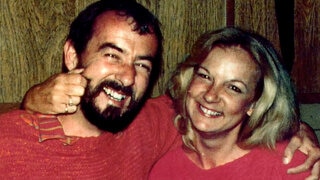Create a free profile to get unlimited access to exclusive videos, breaking news, sweepstakes, and more!
Narcissism, Ax-Grinding, Copycatting And More Reasons Killers Write Manifestos
At a gruesome California serial murder scene, Leonard Lake left a record of his deadly rationale. He's not the only murderer to leave such a document behind. Why?

In 1985, following the arrest of Leonard Lake for carrying a gun and an illegal silencer in a stolen car he was driving, police discovered evidence of multiple murders at his cabin of horrors in northern California.
Alongside Charles Ng, Lake had used the remote Wilseyville property owned by his wife as a torture-murder compound. “Manifesto of a Serial Killer,” airing January 1 at 7/6c on Oxygen, provides an in-depth look at the still-shocking case.
In addition to the victims’ remains — at least 11 people and possibly as many as 25 — police discovered videotapes and written documents. In them Lake detailed his deadly rationale for the horrors: He turned a depraved sexual fantasy of enslaving young women into reality.
It’s not uncommon for killers to share manifestos with news organizations and social media. Ted Kaczynski, the “Unabomber,” whose mail-bombs killed three people, created a hate-filled mission statement. Former cop Christopher Dorner posted a Facebook manifesto before killing four people and wounding three others.
Why do killers share rationales and manifestos? Before the special premieres, Oxygen.com asked forensic psychologists whose work has involved interviewing and researching people who have written lengthy diatribes to share insights. Here are five factors that may come into play.
Narcissism
A common shared characteristic is an artificially inflated view of themselves and their tasks, according to Dr. N.G. Berrill, Ph.D., director of New York Forensic.
“They are convinced that their thoughts and ideas are really very important,” he said. These writings tend to be self-congratulatory, and sometimes are irrational, incoherent, and rambling.
Axe-grinding
These individuals often carry grudges. “The slang term is ‘injustice collectors,” according to Dr. Joni Johnston, a forensic psychologist and author of “Serial Killers: 101 Questions True Crime Fans Ask.” Sharing mission statements is a way to air grievances.
“The message often is ‘Don’t blame me, I’m the victim,’” said Johnston, adding that they want to be judged in context of perceived wrongs done to them.
RELATED: Where Was Serial Killer Leonard Lake's 'Torture Cabin' Located?
“Some of them may have been treated fairly poorly or bullied,” Johnston said. “But over time, this person begins to take everything personally and stew about them.”
Empowerment and visibility
Manifestos provide a sense of power and a source of attention.
“These individuals feel, ‘I’ve been silent for so long and ignored. I’ve been invisible. I’ve been mistreated,’” said Johnston. “‘Now I'm going to tell you all the things that I've been keeping inside. This is my chance to simply justify what I'm doing but to show you I was right.’”
Making a mark
Manifestos are a permanent reminder.
“They’re a means of securing what they feel is a foothold historically in the culture,” said Berrill. “More than their violence they're leaving this manifesto that they think people will find compelling and fascinating and will perhaps in some ways help to justify what they do.”
Copycatting
There have been situations where serial killers have looked to other murderers for inspiration. That applies to writing a manifesto, according to Johnston.
To find out more about the case and what was in Lake’s deadly rationale, watch “Manifesto of a Serial Killer,” airing January 1 at 7/6c on Oxygen.






























